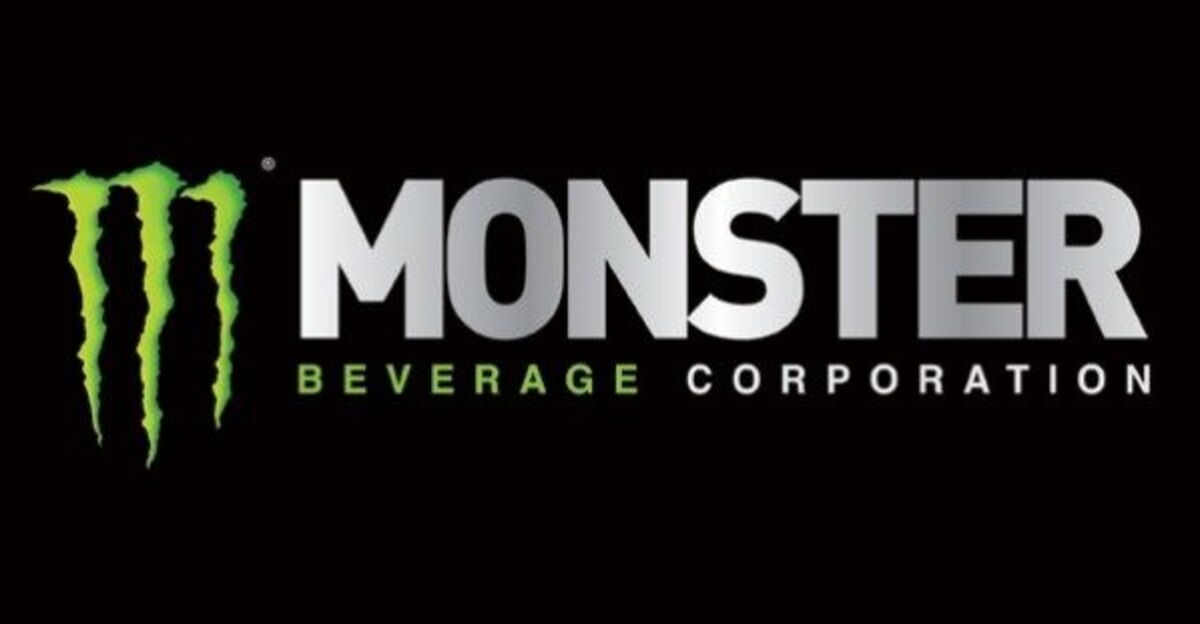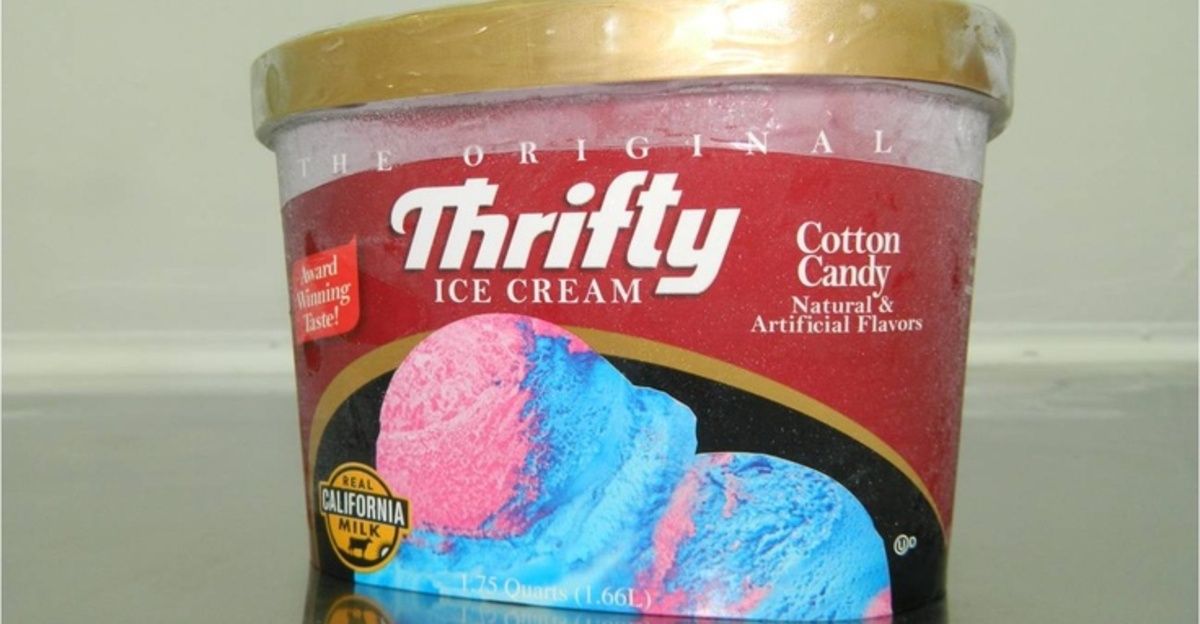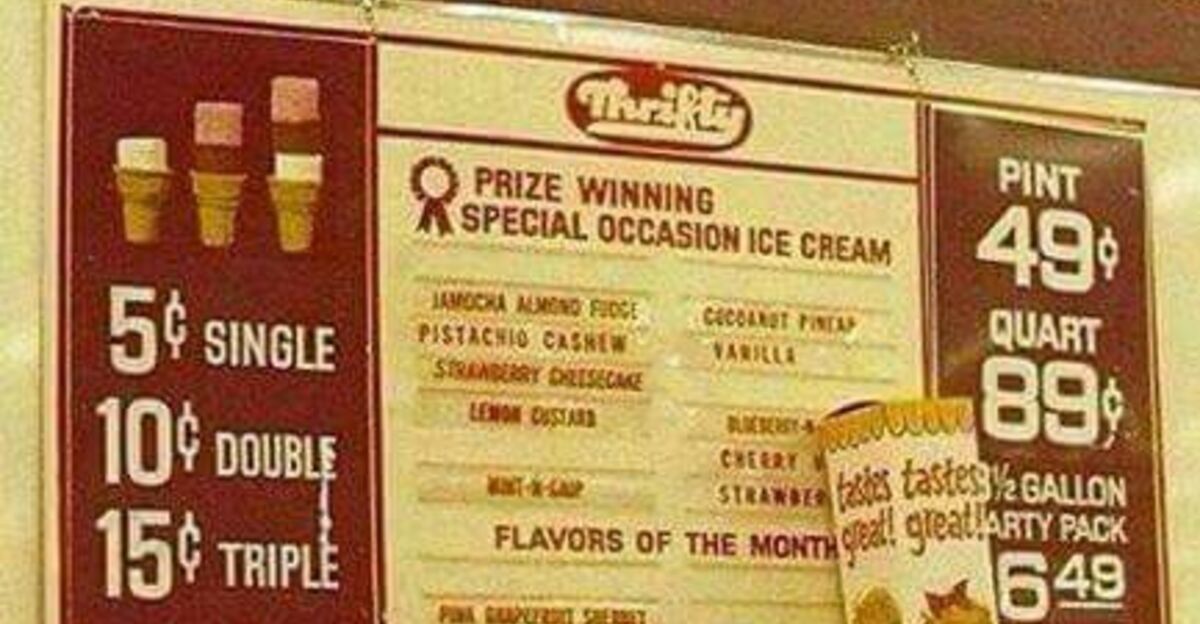
Thrifty Ice Cream, a beloved ice cream brand with roots dating back to 1940, is closing nearly 1,000 locations around the country as its parent company Rite Aid files for bankruptcy protection for the second time in less than two years.
Rite Aid, a major U.S. pharmacy chain, has been struggling under heavy debt and stiff competition, which has forced it to close many stores and divest assets, including the iconic ice cream brand.
Rite Aid’s Financial Collapse and Impact on Thrifty

Rite Aid had filed for bankruptcy in May 2025, its second Chapter 11 restructuring in 2023 that failed to stabilize the company’s finances.
The pharmacy chain reported liabilities of between $1 billion and $10 billion, with $8.6 billion in debt at the time of its second filing.
CEO Matt Schroeder emphasized the company’s commitment to maintaining pharmacy services and saving jobs during the process, but the financial pressure was too much, forcing them to close many locations and sell off assets like Thrifty Ice Cream.
Sale of Thrifty Ice Cream to Energy Drink Empire

In a surprising twist, Rite Aid sold the Thrifty Ice Cream brand to Hilrod Holdings LP for $19.2 million as part of its bankruptcy asset sale.
Hilrod Holdings is linked to Hilton Schlosberg and Rodney Sacks, top executives at Monster Beverage Corporation, a leading energy drink company.
The bankruptcy court approved the deal, seperating Thrifty from Rite Aid’s troubled operations and potentially giving the brand a new lease on life under fresh ownership.
Thrifty Ice Cream’s Legacy and Popularity

Thrifty Ice Cream originated as part of Thrifty Drug Stores in Southern California, and was known for its cylindrical-shaped scoops and nostalgic counter service.
The ice cream became a hallmark in hundreds of stores nationwide after Rite Aid acquired Thrifty in 1996. However, despite brand popularity, continuing financial difficulties of its parent company led to the brand’s near disappearance from many retailers.
Industry Reaction to the Closures

Accoring to retail analyst Sarah Jensen,”The closure of nearly 1,000 Thrifty Ice Cream locations highlights the broader challenges facing traditional retail chains in an era of rising costs and shifting consumer habits
“The sale to an energy-drink conglomerate may be out of the ordinary, but it is indicative of a wider trend of diversified businesses and brand repositioning in the food-and-beverage sector.”
Jensen adds that “the future of Thrifty will depend on how well Hilrod Holdings will embrace the brand’s nostalgia while tapping into a new generation of consumers.
Continued Availability and Uncertain Future

Some Thrifty Ice Cream products will still be sold at selected supermarkets and outlets, including in Mexico, under Hilrod’s ownership. But the company’s future is uncertain as it trasnitions away from Rite Aid’s retail footprint.
Fan and industry watchers hold out hope that the new owners will preserve the brand’s heritage while expanding its reach beyond traditional drugstore settings.
Ice Cream Chains Facing Challenges

Thrifty’s struggles are part of a wider pattern affecting ice cream and fast food chains. Dairy Queen, for example, closed 25 locations in Texas earlier this year due to franchisee decisions and rising operational costs, though the chain itself remains strong nationally.
Experts note that increasing costs, inflation, and changing consumer preferences are reasons why many food chains are closing stores or restructuring.
Rite Aid’s Store Closures and the Rise of ‘Pharmacy Deserts

Rite Aid’s closures extend beyond ice cream counters. The company has designated over 1,000 pharmacy stores for closure, prompting concerns of a lack of access to medications in affected areas.
Experts warn that the closures are contributing to the rise of “pharmacy deserts,” in which residents have to travel long distances to receive essential health services.
This trend is being followed by rivals such as CVS and Walgreens as these two competitors reduce their number of stores to become more operationally efficient.
Customer and Employee Impact

The sudden closures have left many customers and employees disheartened. Regular customers of Thrifty Ice Cream and Rite Aid stores are at risk of saying goodbye to familiar local spots, and employees could lose their jobs as the company reels from financial troubles.
Rite Aid has promised that the store closures will bring minimal disruptions, but the sheer number of stores that will close is bound to be felt in the communities where they operate.
What This Means for Consumers

For consumers, the sale of Thrifty Ice Cream to an energy drink-related holding company signals a shift in how legacy food brands may be managed in the future.
While the brand’s nostalgic appeal endures, its survival will depend on strategic reinvention and adaptation to a competitive market.
Meanwhile, the Rite Aid bankruptcy and store closures highlight ongoing challenges in retail pharmacy and food service sectors, emphasizing the need for innovation and resilience in a changing economic landscape.